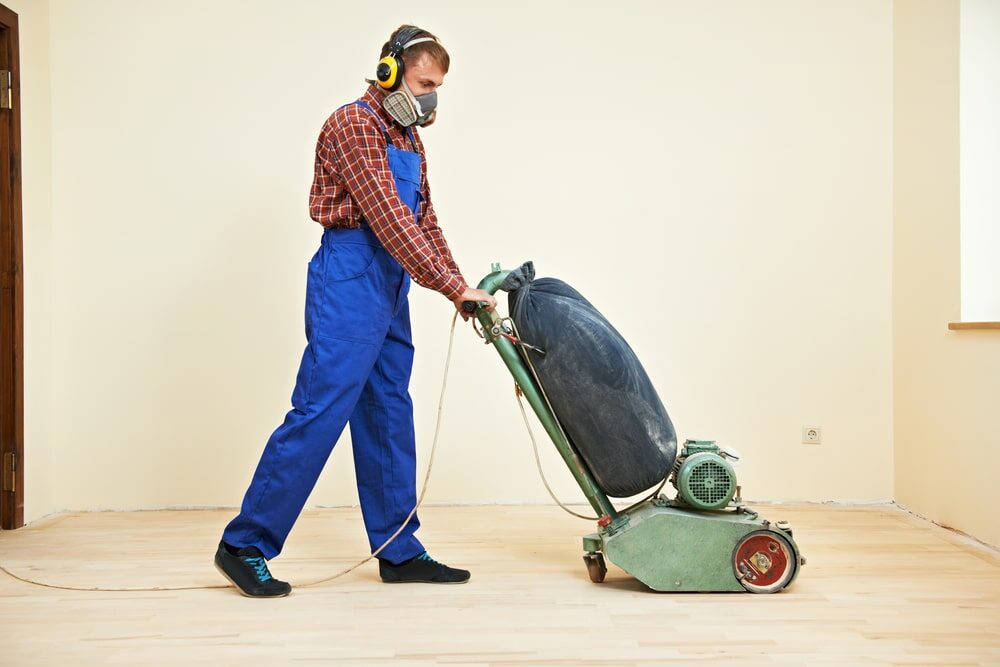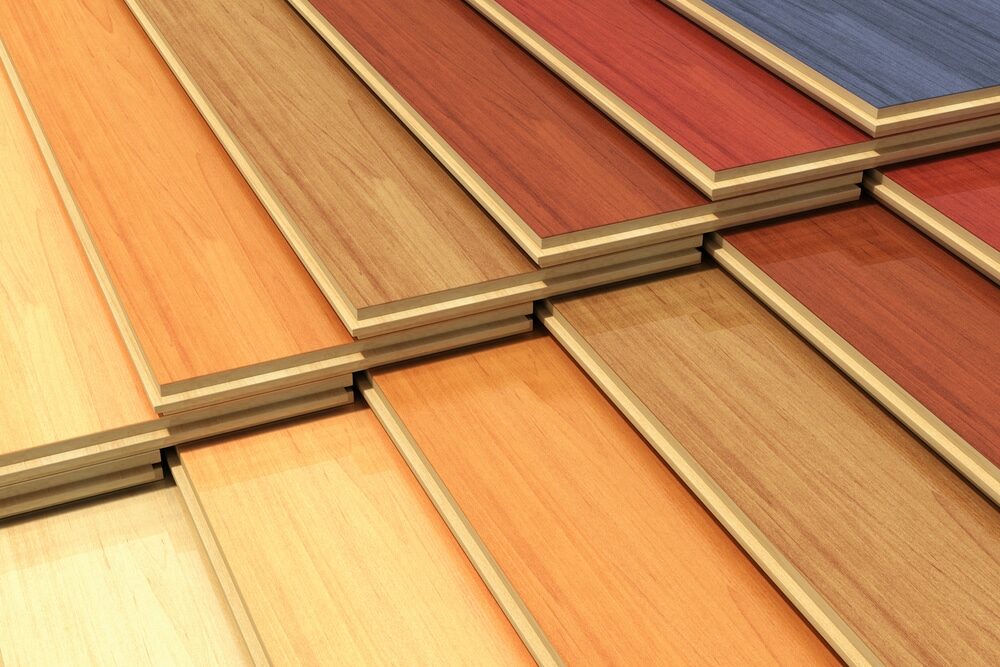London:
Nationwide:
The Art of Hand Scraping Wooden Floors: A Comprehensive Guide
Posted on August 28, 2023
Floor sanding techniques
The Timeless Craft: Hand Scraping Wooden Floors
The hand-scraped texture is one of the most beautiful and timeless finishes for a wooden floor. Harking back to an era when each plank was carefully worked by hand, this ancient technique lends authenticity, character, and unmatched beauty to modern-day homes. This guide offers a comprehensive look into the art of hand-scraping wooden floors.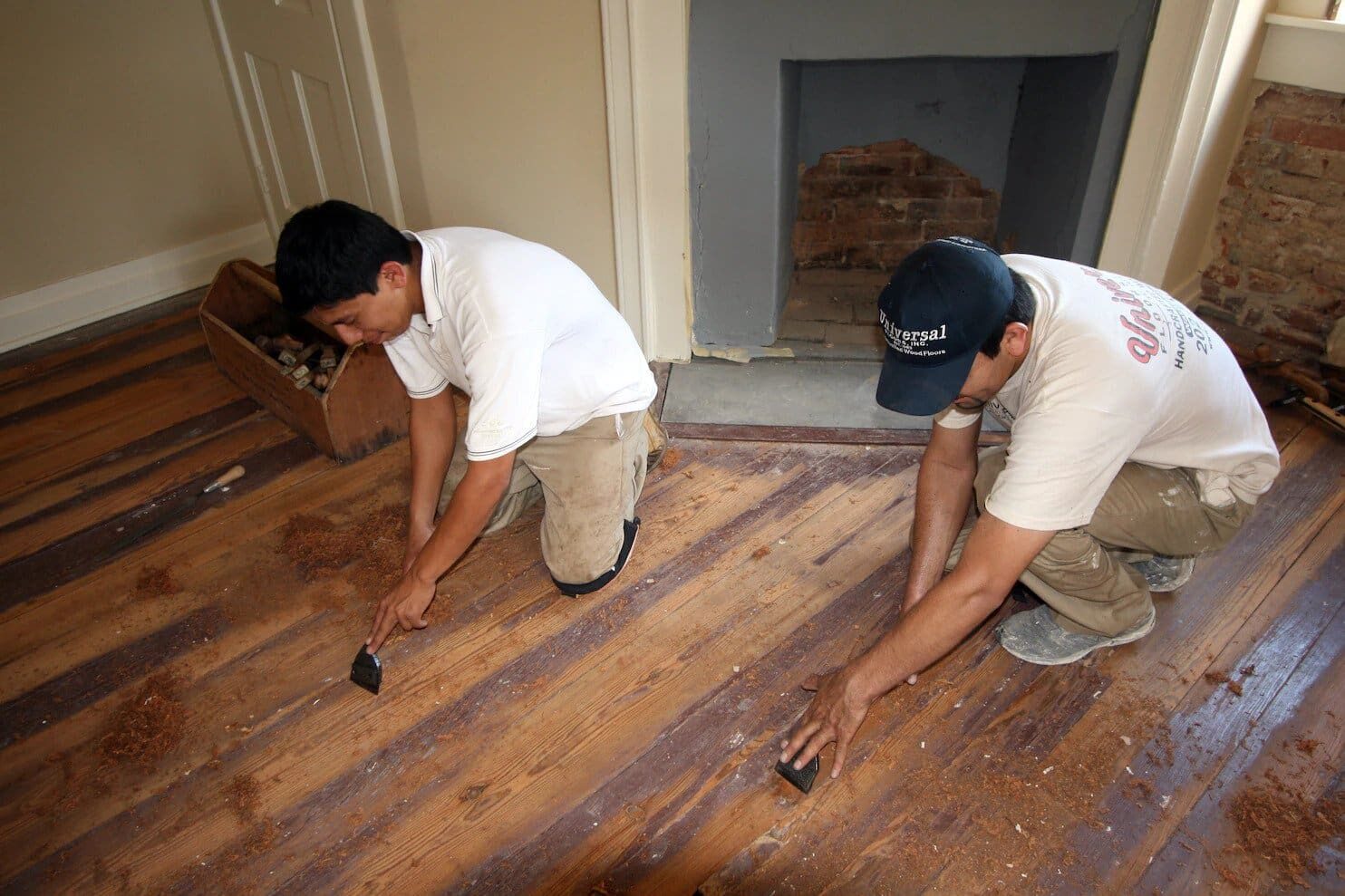
The Evolution of Floor Finishing
A couple of centuries ago, wood floors weren’t the gleaming, perfectly levelled surfaces we see today. They bore the marks of hand tools and the personal touch of artisans. The irregularities in these floors, now considered character, were just a fact of life back then. As technology evolved, machinery took over, delivering uniform floors at high speed. However, for those with an eye for tradition and a taste for authenticity, the hand-scraped look is a nod to bygone times and a testament to the skills of old-world craftsmen.Why Hand-Scraped?
Beyond the obvious aesthetic appeal, there are practical benefits:- Durability: The grooves and indentations make dents and scratches less noticeable than on a smooth floor.
- Unique Character: No two hand-scraped floors are the same.
- Adds Value: Hand-scraped floors can increase a home’s market value due to their perceived luxury and craftsmanship.
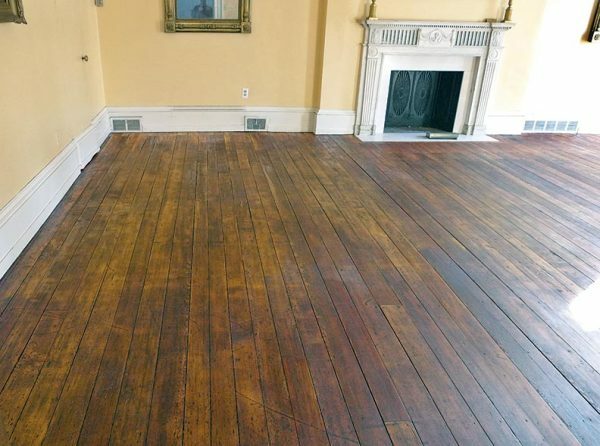
The Hand Scraping Process
Hand scraping is not merely about creating a rough surface. It’s about recreating the authentic foot-worn pattern of vintage floors.- Choosing the Wood: The first step is selecting the right wood. Hardwoods like oak, hickory, and walnut work well.
- Preparation: Begin by ensuring the wooden floor is clean. Remove any nails, staples, or impediments.
- Tools of the Trade: Traditional craftsmen used draw knives, which have two-handled blades. Modern options include specialised hand scraping tools, which offer more control.
- Technique: Hold the tool at a slight angle and push or pull it towards you, removing thin layers of wood. The strokes should be long and continuous. Aim for random, varied patterns.
- Sanding: After scraping, the floor will need light sanding to smooth out any rough patches. Use fine-grit sandpaper for this.
- Staining and Sealing: The final steps involve staining (if desired) and sealing the wood to protect it.
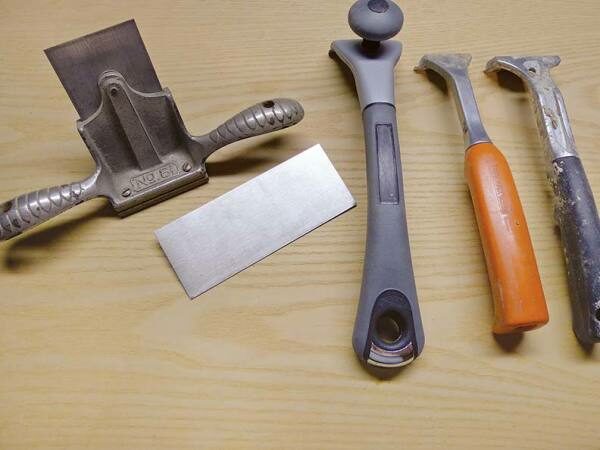
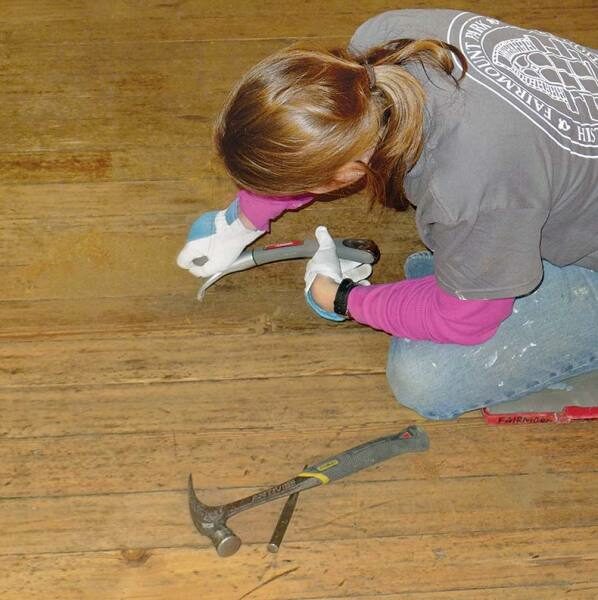
Tips for Perfect Hand Scraping
- Embrace Variability: The beauty of hand scraping is in its imperfection. Don’t aim for a uniform look.
- Practice makes perfect. Before you begin on the main floor, practice on scrap wood or in a less noticeable corner.
- Safety first: Always wear safety gloves and goggles.
- Know Your Wood: Understand the characteristics of the wood you’re working with. Softer woods may require a lighter touch, while harder woods can withstand more vigorous scraping.
- Study Vintage Floors: Take the time to study genuinely old hand-scraped floors in historic homes or buildings. This can provide inspiration and a template for the kind of effect you’re aiming for.
- Consistent Pressure: While you want variability in your scraping for a more authentic look, maintaining consistent pressure ensures that you don’t unintentionally gouge the wood too deeply in certain spots.
- Change Your Angle: Occasionally changing the angle of your scraping tool can lead to varied patterns, which can give the floor a more authentic vintage look.
- Mind the Edges: The edges of rooms or boards can be easy to overlook, but they need attention to ensure the entire floor has a uniform feel.
- Use Proper Lighting: Bright, angled lighting can highlight areas that need more work and ensure that you’re achieving a consistent texture throughout.
- Listen to the wood: This might sound poetic, but woodworkers often say they can ‘listen’ to the wood. It means feeling the resistance, noting the sound variations, and adapting your technique accordingly.
- Stay sharp. Ensure your tools remain sharp. Dull tools can lead to uneven surfaces and be harder to control.
- Clean as You Go: Regularly clean away the shavings and dust. This not only provides a clearer workspace but also allows you to see your progress and ensure consistency.
- Take BreaksHand scraping is laborious. Taking breaks ensures you remain sharp and focused, reducing the chance of mistakes.
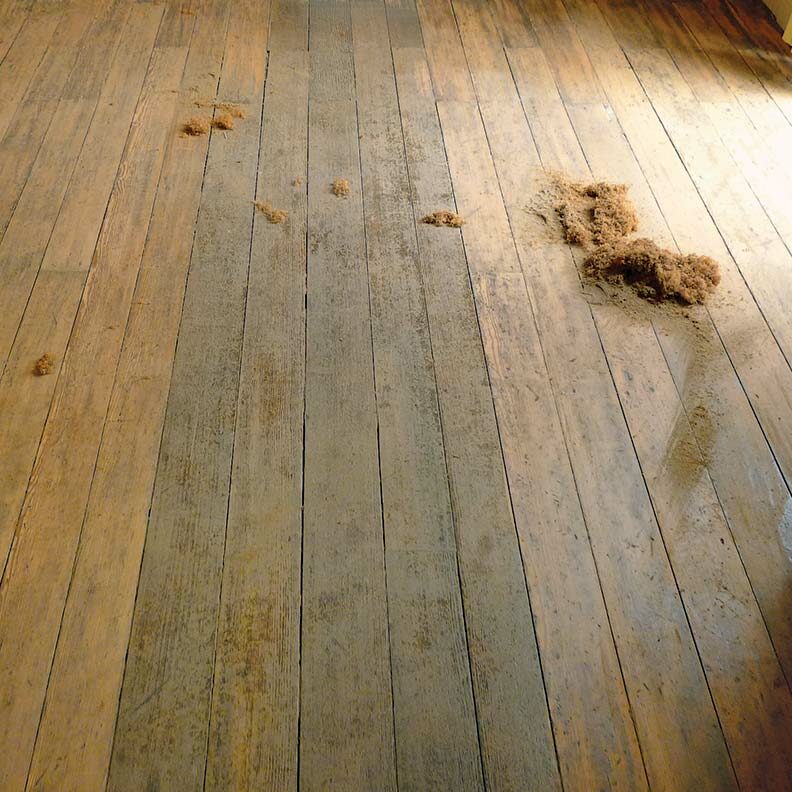
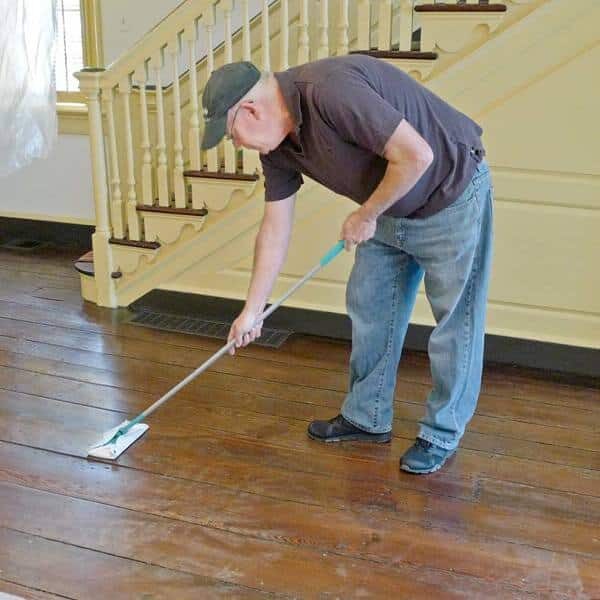
Maintenance of Hand-Scraped Floors
Though rugged in appearance, these floors deserve gentle care.- Regular Dusting: Use a soft broom or a microfiber mop.
- Avoid harsh chemicals. Use pH-neutral cleaners.
- Protection: Use furniture pads and rugs to protect high-traffic areas.
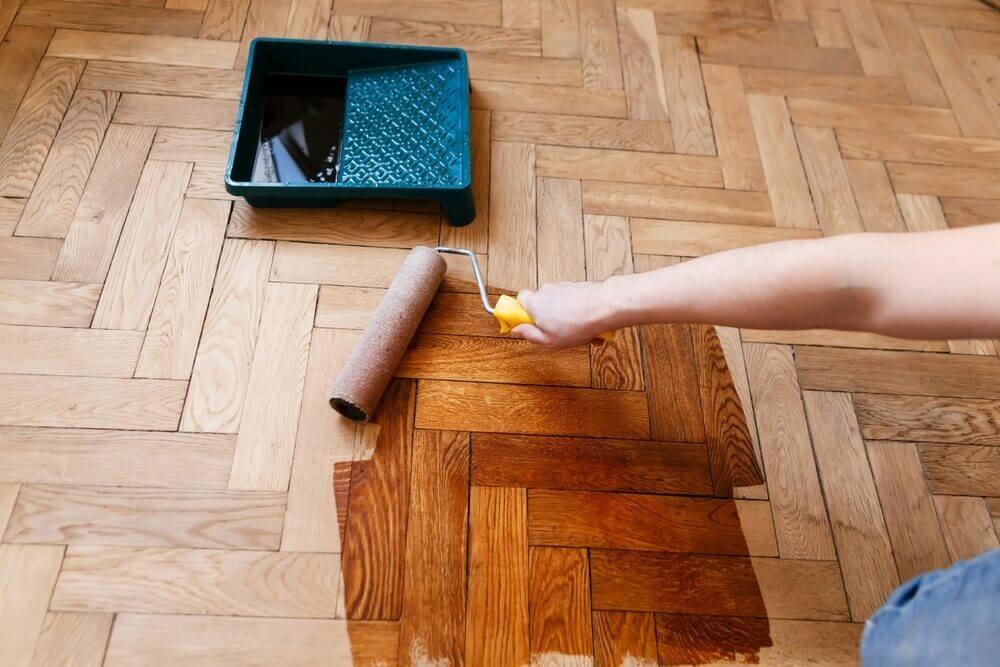
The Nuances of Wood Selection
While any hardwood is theoretically suitable for hand scraping, it’s the grain patterns, colours, and inherent properties of the wood that can influence the final outcome.- Oak: Known for its sturdy grain patterns, oak offers a rustic look when hand-scraped. The grooves tend to highlight the natural patterns of the wood, making it a top choice for many.
- Hickory: Hickory, with its inherent contrasts in the grain, can deliver a more dramatic, pronounced appearance when scraped.
- Walnut: This dark, rich wood offers a subtler, scraped appearance, lending an air of understated sophistication.
Historical Context: A Walk Down Memory Lane
Hand scraping was not initially a design choice but a necessity. In the 1800s, when settlers were building homes, they had to flatten logs and planks to make them fit for flooring. This was done using hand tools, and the resultant texture was, in essence, the first ‘hand-scraped’ finish. This context adds depth to the hand-scraped design, infusing each plank with stories of yore.Environmental Benefits
Hand scraping, being a manual process, reduces the carbon footprint compared to machine finishing. The process requires no electricity, making it eco-friendly. Furthermore, when done correctly, there’s less waste of wood compared to machine finishing.Customization and personal touch
One of the most appealing aspects of hand scraping is the room for personalisation. Whether you prefer deep, dramatic grooves or a subtler texture, the floor can be tailored to your preferences. Some homeowners even opt to incorporate unique designs, symbols, or initials into the floor—a hidden signature of sorts.Conclusion
The beauty of a hand-scraped floor is more than skin deep; it’s a testament to the enduring appeal of craftsmanship, a fusion of history and modern sensibilities. In our age of mass production, choosing a floor that bears the mark of human touch is a statement in itself. As you slide your fingers over the undulating surface of a hand-scraped floor, remember: you’re not just feeling wood. You’re touching history, craft, and a legacy of beauty that stands the test of time.Some Useful Links:
- Stairs Sanding & Refinishing
- Floor Sanding Services
- School Floor Sanding
- Wood Floor Restorations
- Wood Floor Repairs
- Wood Floor Polishing
More from our Blog:
Orbital Sanding for Commercial Flooring: Best Practices and Tips The Importance of Proper Sanding Techniques in Orbital Sanding How to Use an Orbital Sander on Stairs The Pros and Cons of DIY Orbital Sanding for Floor Restoration How to Refinish Parquet Floors with Orbital Sanding Orbital Sanding Techniques for Pine Floors How to Achieve a Matte Finish with Orbital Sanding The Differences Between Orbital and Drum Sanding for Floors How to Prep Your Space for Orbital Sanding
Sanding
We provide virtually dust-free sanding with our continuous belt machinery with mobile extraction units, giving you a safer environment for your family.
Oiling
This organic finish not only adds beauty to your home but also has exceptional water-repellent characteristics, making it easier to clean and maintain.
Waxing
This natural floor finish offers the softest and most mellow appearance – and leaves your floor able to breath.
Buffing
Using soft buffing machines (and hand-polishing where required) will bring a wonderful sheen to your newly-finished floor.
Repairs
We offer a full assessment of your wooden floors to determine what repairs are needed to provide the perfect working surface for the later stages of sanding, staining and sealing.
Restoration
We offer a comprehensive restoration process designed to address floors that are improperly fitted or damaged over time through wear and tear.
Request a fixed price quote for your wood floor restoration now
Simply enter your postcode below to get started.
Services
Wood Floor Sanding Wood Floor Restoration Wood Floor Scratch Repair Squeaky Wood Floor Repair Parquet Floor Sanding Parquet Floor Restoration Commercial Floor Sanding Church Floor Sanding Community Centre Floor Sanding School Floor Sanding Gap Filling Gap Filling with ResinCopyright © Mr Sander®
Privacy & Cookies Terms & Conditions Complaints Procedure Cancellation Rights Sitemap